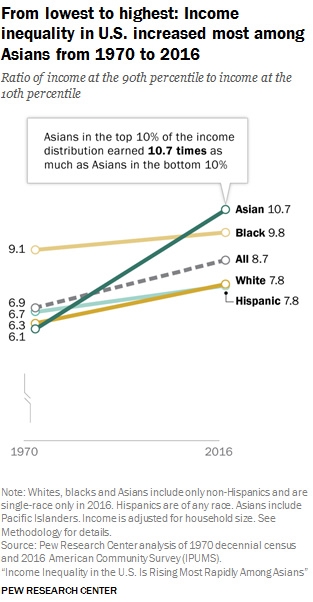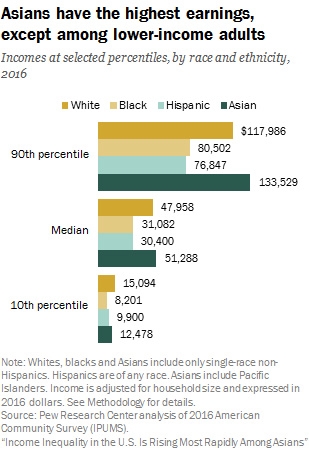Here’s another reason why the “model minority” myth is so damaging
As my colleague and I wrote recently, the myth of Asian-Americans as a model minority persists, painting a wildly diverse community as uniformly educated, hard-working, and successful. Now a new Pew Research report affirms what we already know to be true: Not all Asian-Americans have found financial security. In fact, according to the report, income inequality among Asian-Americans is higher than in any other racial and ethnic group in the U.S.

Over almost five decades—from 1970 to 2016—the poorest Asian-Americans have made fewer gains in income than the lower-income contingent of other groups. Wealthy Asian-Americans, meanwhile, have only gotten wealthier. Part of this can be attributed to the fact that Asian-Americans are still overwhelmingly foreign-born: As of 2016, 78% of Asian-Americans were born outside of the U.S., up from 45% in 1970. Many are skilled H-1B workers from countries like India, but others are refugees from the likes of Bhutan and Vietnam. That makes for a wide spectrum of education levels; in 2015, 72% of Indian-Americans had a bachelor’s degree, compared to 9% of Bhutanese-Americans.

If income inequality is high among Asian-Americans, it’s also because the wealthiest Asian-Americans are, as a whole, wealthier than any other group. As of 2016, the median income for Asian adults ($51,288) is higher than the median income for white ($47,958), black ($31,082), and Hispanic ($30,400) adults, according to Pew. (The poorest Asian-Americans, however, have a lower income than their white counterparts.) As immigration continues, the economic gap between Asian-Americans could widen even more.
Since Pew used census data, there is no breakdown of Asian-American economic divisions by country of origin. But a report like this one reiterates why “Asian-American” is an umbrella term that can’t begin to account for the differences in culture, language, religion, and socioeconomic status across Asian countries.
(8)



